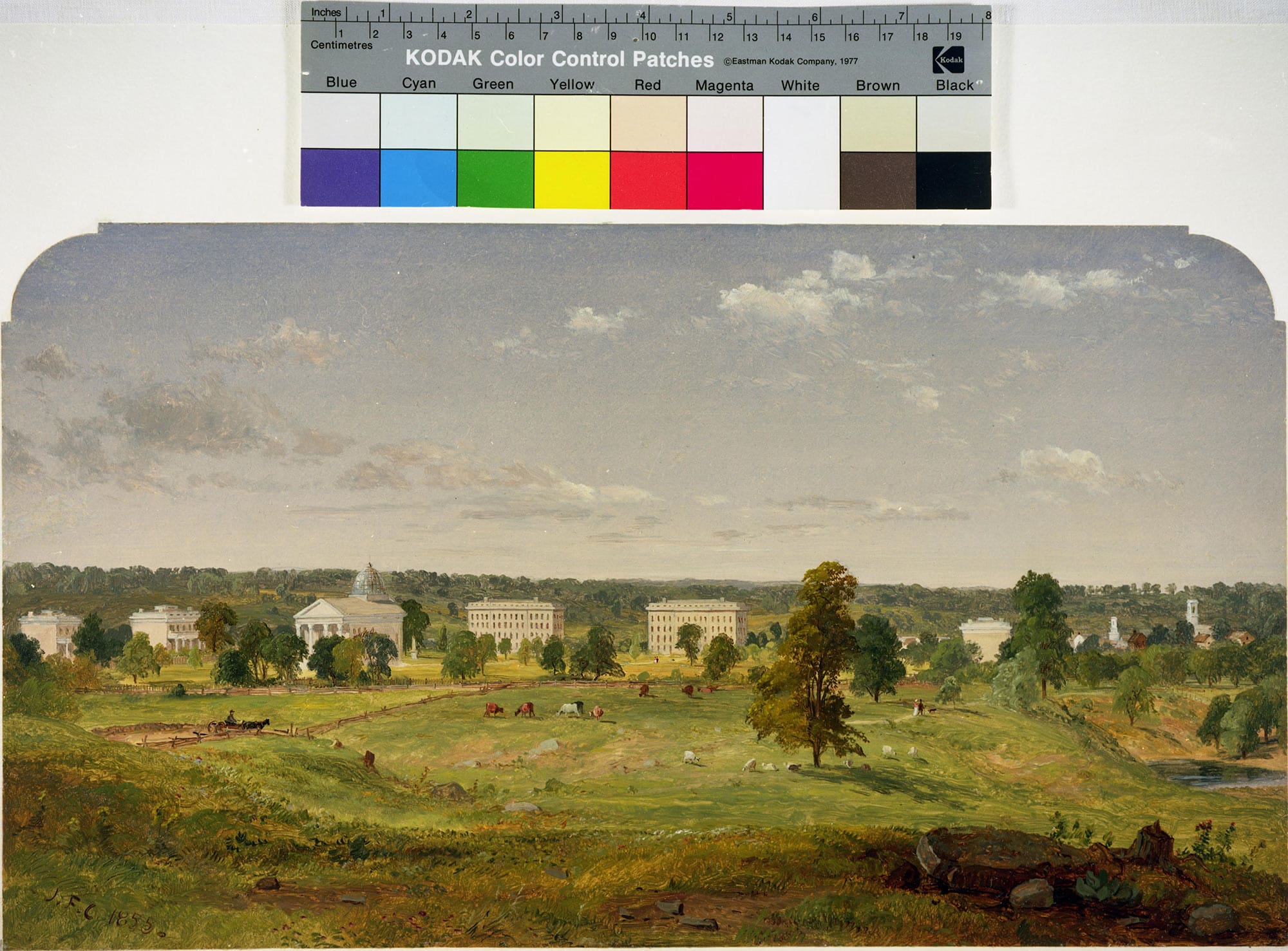Origins & Trajectories houses projects that focus on the trajectory of the university over time, with a focus on examining received histories, recontextualizing existing narratives, and centering heretofore ignored stories.


Jasper Cropsey painting of the University of Michigan campus, 1855
Origins & Trajectories
Project Sites
The 1817 Project: Land, Culture, Memory, and Repair
Winter 2024 - presentCo-PIs: Eric Hemenway, Bethany Hughes, and Michael Witgen
This project site involves an historical examination of the foundational land transfer by the Ojibwe, Odawa, and Bodewadami nations in the 1817 Treaty of Fort Meigs (also known as the Treaty of the Maumee Rapids) that was part of the university’s origins in Detroit and subsequent relocation to Ann Arbor. Our hope is to better understand this complex process and its longer term consequences in relation to broader histories of Native American and Indigenous land dispossession in the Great Lakes Region and across North America. Work on the 1817 Project includes deep, collaborative research into the early history of the university and Michigan territory, and also how this history has been represented, occluded, contested, and addressed through more recent legal challenges, Native student activism, and statewide forms of legislation since the 1970s (e.g., the Michigan Indian Tuition Waiver).
The 1959 Project: University of Michigan-Dearborn’s Origins and Timelines
Winter 2024 - presentPI: Camron Amin
This project examines not just how the Dearborn campus got started in the 1950s, but also considers multiple inflection points to the present. To understand both the progress and missed opportunities of inclusivity initiatives at UM-Dearborn, The 1959 Project is pursuing foundational initiatives in oral history, survey and focus group research, and archival development.
Urban Renewal and the University of Michigan-Flint
Spring 2024 - presentCo-PIs: Callum Carr-Marquis and Benjamin Gaydos
In the 1960s and 1970s, American metropolitan areas razed neighborhoods to build freeways in the name of urban renewal. In theory, the city planning philosophy known as urban renewal called for removing blighted neighborhoods to increase the desirability of living and working in quickly shrinking cities. In practice, however, the policy was used by local governments to bulldoze and scatter Black communities. Particularly in the City of Flint, the St. John Street and Floral Park (southside) neighborhoods were destroyed and their vibrant communities displaced to make way for the I-69/I-475 freeway interchange and an industrial park. Expanding the UM-Flint campus, a goal of the city’s urban renewal plans, is crucial to this history. This project aims to shed light on the Black communities displaced by urban renewal in Flint while examining the role of the University of Michigan-Flint in this process.

